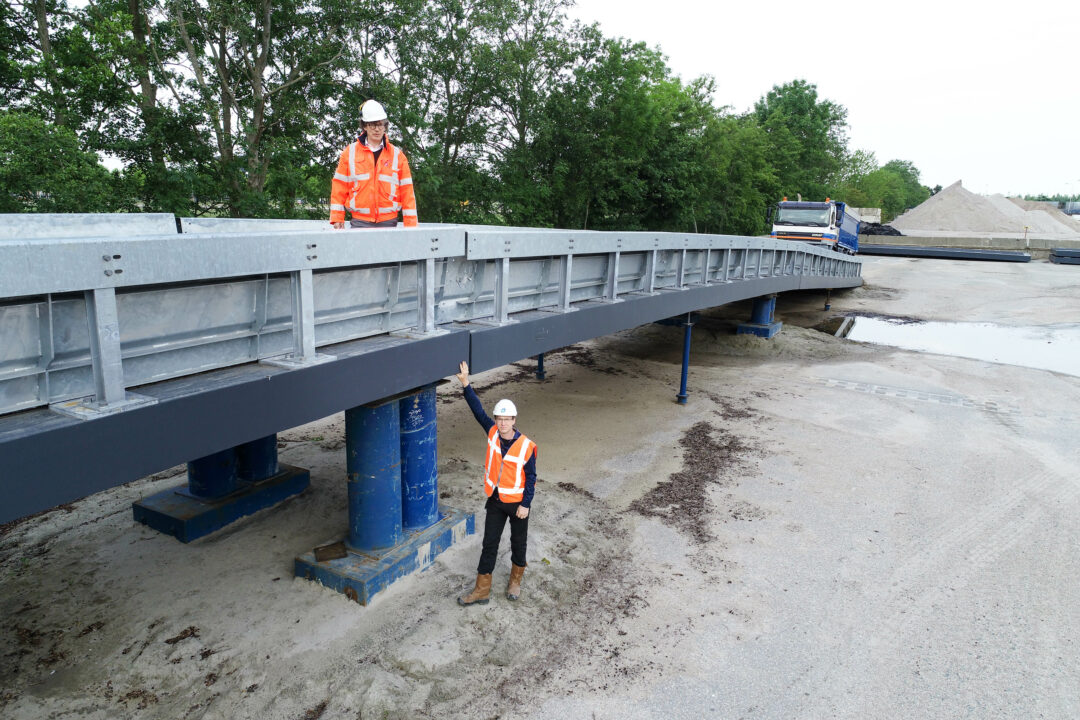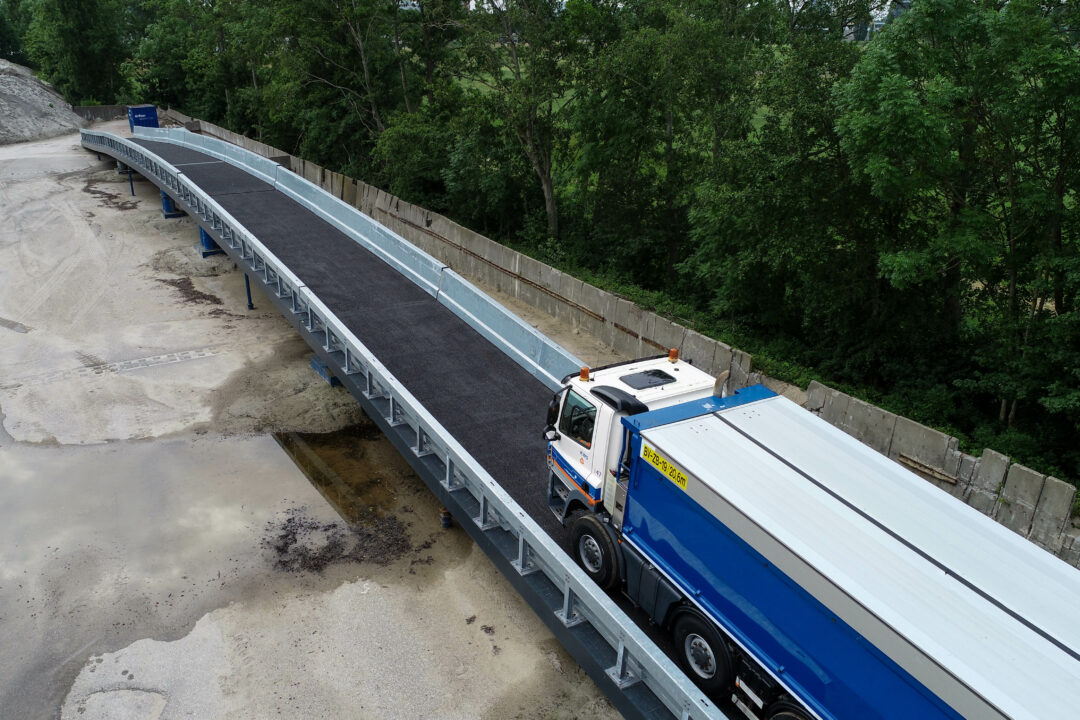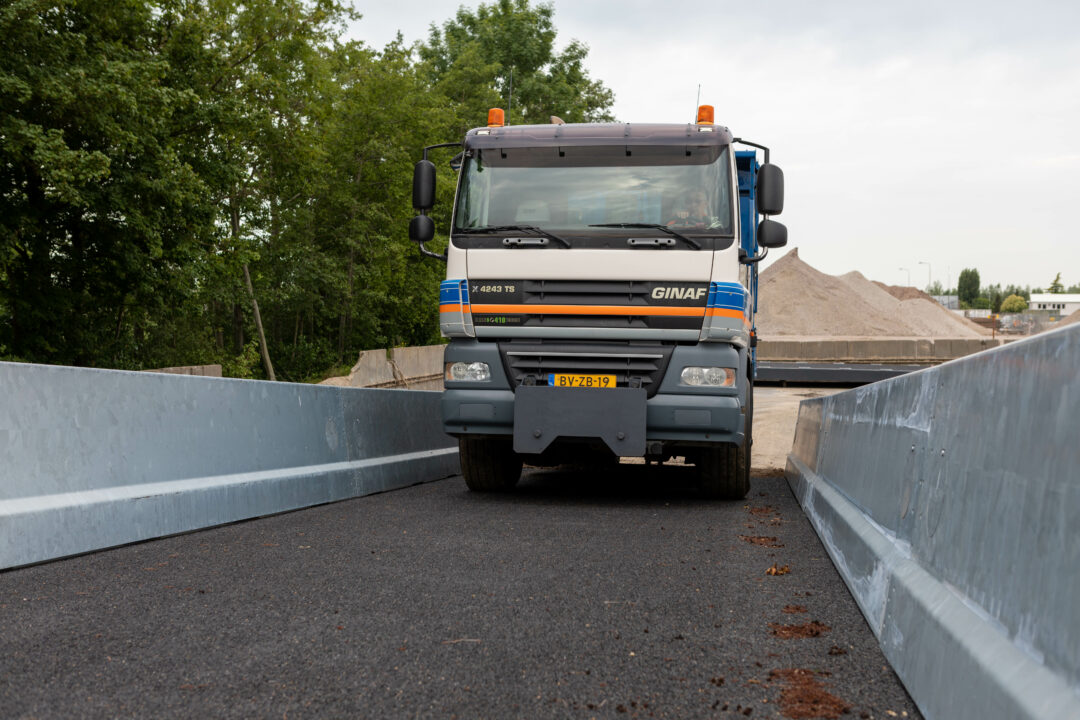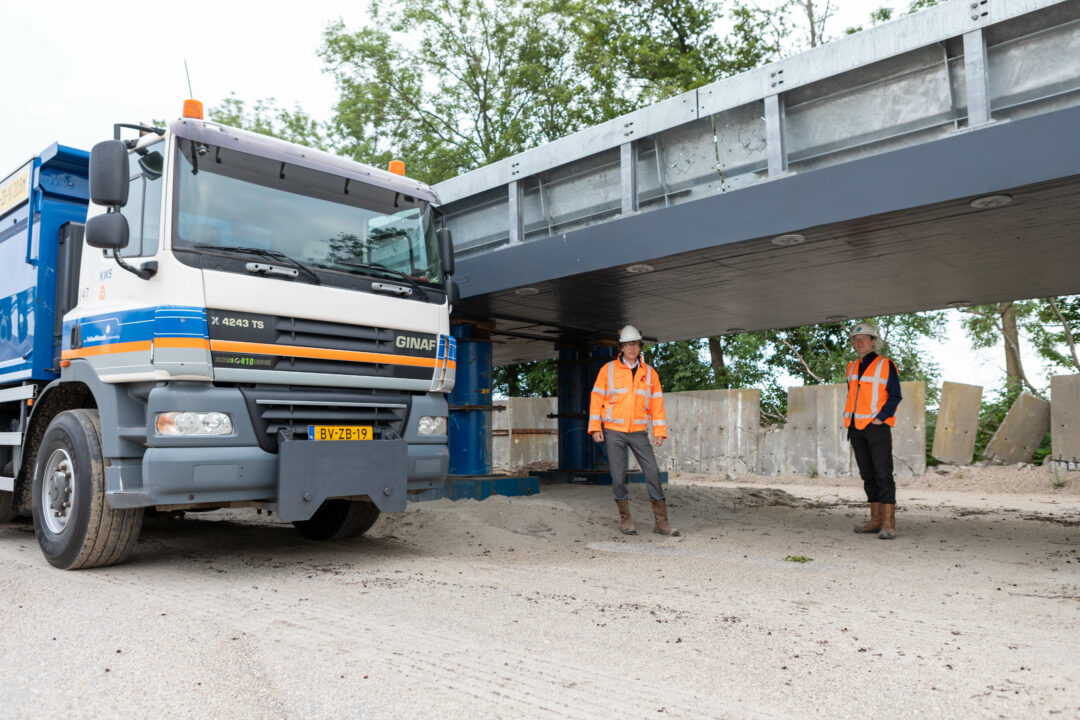Higher safety and lower social costs
KWS (part of VolkerWessels) is introducing an innovative composite auxiliary bridge that will significantly reduce traffic disruption during road works. Together with FiberCore Europe and Rijkswaterstaat, KWS developed the smart, temporary bridge 'HUGO' (Auxiliary Bridge for Major Maintenance): a lightweight, demountable bridge that is placed on the carriageway. Through traffic travels over the auxiliary bridge while the work takes place simultaneously under the bridge. A safe working environment for the road worker and a solution for inconvenience during works. After extensive practical testing of the prototype, KWS, in collaboration with Rijkswaterstaat, is now looking for the first projects for application of the auxiliary bridge.
With road work, disruption to road users and the surrounding area is usually unavoidable. Closing lanes and traffic lanes is so far the only way to carry out work. Where necessary, detour are set up to handle traffic. The result: traffic jams, inconvenience for local residents and road users and, despite safety measures, often unsafe situations for the road workers. Moreover, the social costs are high: traffic measures but also traffic jams cost money. A topical issue, given the usual traffic intensity and the task of major maintenance of bridges and viaducts and the replacement of expansion joints.
Innovating together
KWS, in cooperation with Rijkswaterstaat, has started a process to speed up the development of these auxiliary bridges called HUGO. KWS took the initiative to build a prototype with partner FiberCore Europe (FCE). The basis for this is the composite (permanent) traffic bridge, of which FCE has already placed about 100 in the Netherlands alone. FCE also placed previous (temporary) bicycle bridges in projects of KWS. Civiele Technieken deBoer was also involved in the development of the auxiliary bridge. The auxiliary bridge is suitable for the replacement and renovation of joint crossing structures, major maintenance of viaducts and bridges, the installation, repair or replacement of culverts (hydrological and/or ecological), as a temporary ecoduct or as a connection for emergency services or public transport bus lanes.
After extensive testing of the prototype, two complete auxiliary bridges are now available. Together with the Department of Public Works, KWS is now looking for the first projects for application of the auxiliary bridge.
Suggestions from other road authorities are welcome, in addition to potential projects from the two partners themselves. KWS is pulling together with Rijkswaterstaat over the next two years to optimize, deploy and monitor this innovation.
Flow and work through at the same time
The auxiliary structure is placed as a "vertical phasing" over the work area where the work is taking place. Overhead (across the bridge), traffic will drive safely at a speed of 50 km/h over the roadway on which work is being carried out. This prevents detour and congestion on the surrounding road network. This also means that the work does not impede emergency services and they can use the existing approach routes. For the road workers, application of the auxiliary structure means a safe, physical separation between the traffic flow and their working environment. The separate working environment has a maximum working height of approximately two meters. By preventing traffic congestion and increasing safety, application of this innovation in infrastructure work is of great social value.





